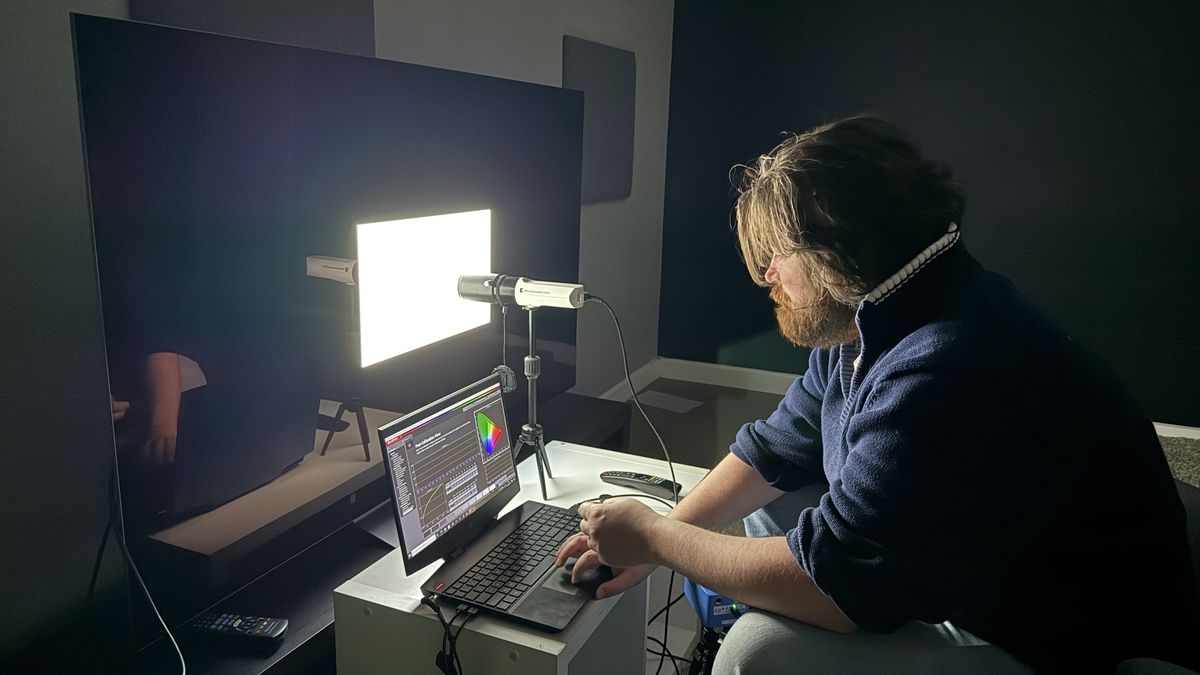In an initial trial, patients who suffer from chronic nerve pain got relief from an interactive game that trained them to alter their own brainwaves. The promising results could lead to a new generation of drug-free treatments, according to the study.
A research team led by psychologists from the University of New South Wales in Sydney, Australia developed PainWaive—a training system that teaches users to regulate abnormal brain activity that underlies nerve pain—as a potential in-home, non-invasive alternative to opioids. The results, published in The Journal of Pain in April, showed that three out of four participants saw significant reductions in pain five weeks after the last treatment.
The PainWaive system consists of an electroencephalogram (EEG) headset that records brain activity paired with an app that instructs patients on how to control their brainwaves through neurofeedback games, according to a UNSW statement. Four participants who suffer from corneal neuropathic pain—a condition that causes painful hypersensitivity of the eyes, face, or head—underwent 20 PainWaive sessions over the course of four weeks.
Doctors aren’t sure exactly what causes corneal neuropathic pain, and this condition rarely responds to current treatments, according to the researchers. But they hypothesized that altering brainwaves generally associated with nerve pain could provide relief.
“The brainwaves of people with neuropathic pain show a distinct pattern: more slow theta waves, fewer alpha waves, and more fast, high beta waves,” co-lead author Sylvia Gustin, a clinical psychologist and UNSW professor, said in the statement. Her research has investigated changes in the thalamus—a central brain structure that relays sensory and motor signals to the cerebral cortex—associated with nerve pain.
“We believe these changes interfere with how the thalamus talks to other parts of the brain, especially the sensory motor cortex, which registers pain,” she said. “I wondered, can we develop a treatment that directly targets and normalizes these abnormal waves?”
This curiosity ultimately led to the development and first clinical trial of PainWaive. For this study, Gustin and her colleagues provided four participants with kits that included an EEG headset and a tablet pre-loaded with the game app. Participants also received guidance on mental strategies that can help them shift their brainwaves from an abnormal to a normal state, such as relaxation techniques.
The researchers assessed the participants’ corneal neuropathic pain symptoms immediately after using PainWaive and five weeks post-treatment. During these follow-ups, participants were encouraged to continue using the brainwave-altering strategies they learned through the training. The results suggest that three of the four participants experienced pain relief comparable to or greater than that offered by opioids, according to UNSW.
While these early results are promising, further clinical trials will need to confirm the safety and efficacy of PainWaive. “Restrictions in the study’s size, design and duration limit our ability to generalize the findings or rule out placebo effects,” co-lead author Negin Hesam-Shariati, a researcher at UNSW’s NeuroRecovery Research Hub, said in the statement. “But the results we’ve seen are exciting and give us confidence to move to the next stage and our larger trial.”
Now, she and her colleagues are recruiting participants for two upcoming trials that will investigate PainWaive’s potential to reduce chronic spinal pain and chronic nerve pain in people with spinal cord injuries.
The development of drug-free pain treatments plays a critical role in combatting the opioid crisis. In the U.S., opioid-related deaths have turned a corner in recent years, with provisional data pointing to a 24% decline between 2023 and 2024. But there is still a need for more non-opioid pain management options.
Hesam-Shariati, Gustin, and their colleagues hope that as PainWaive progresses through clinical trials, it will tick all of those boxes. “Owning the technology offers us the potential to one day offer PainWaive as a truly affordable, accessible solution for at-home pain management, especially for those with limited access to traditional treatments,” Gustin said.









 English (US) ·
English (US) ·